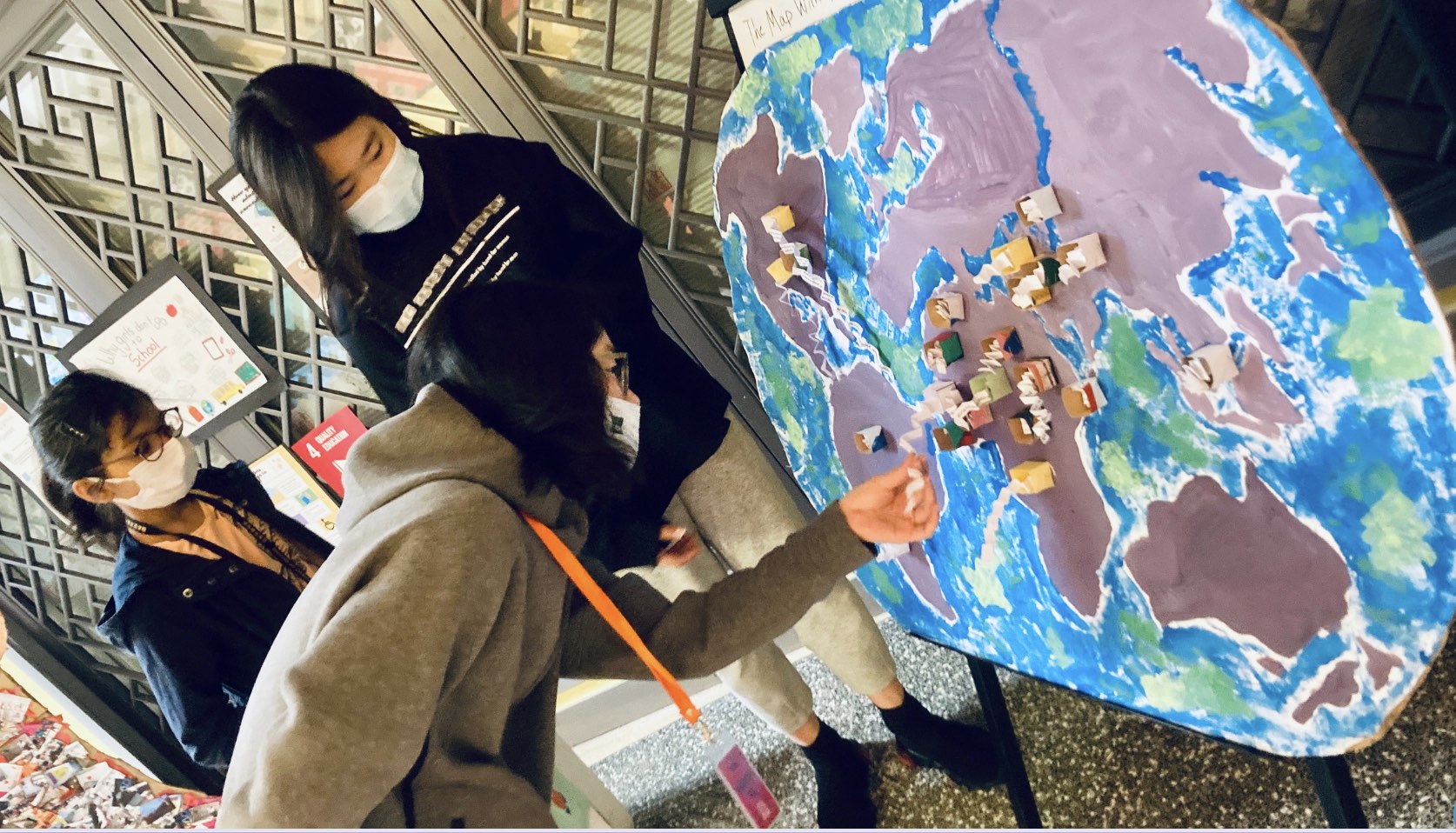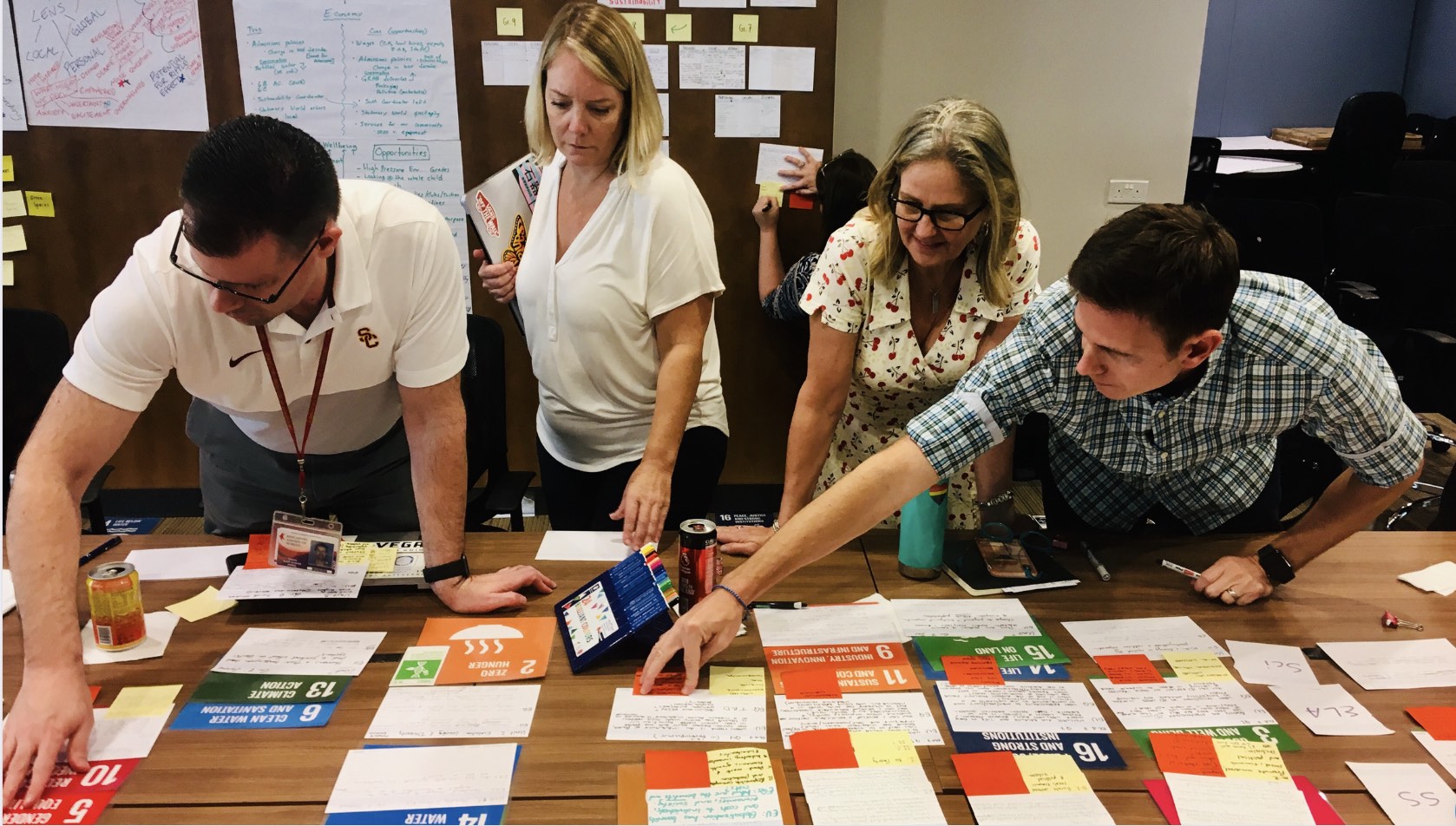Taking the long view: Sustainability for global citizenship transformation
Taking the long view: Sustainability for global citizenship transformation
LeeAnne Lavender
Many educators and leaders in international schools around the globe recognize the value and urgency of global citizenship education (GCE) and the need to empower PreK-12 students to engage in authentic community engagement and active local and global citizenship.
To this end, many educators use the United Nations Sustainable Development Goals (SDGs) to help students understand the most pressing issues of our time and to pursue individual and collective pathways to sustainability. Educators may also prioritize social and emotional learning (SEL), diversity, equity, inclusion and belonging (DEIB), and service learning or community engagement to offer students opportunities to think, learn and act as informed and reflective citizens. Leaders may seek strategic plans and outcomes that support student learner outcomes (SLOs) that feature global citizenship, and parents may choose schools that offer these types of authentic and meaningful learning experiences.
There is a growing awareness amongst international educators that this approach to educating students is foundational and critical for engagement, learning and the transfer of knowledge and skills to practical and identified needs in our local and global communities.
This leaves many educators asking the question “how”? How can I redesign my curriculum to help students learn about the world in inclusive and multi-layered ways? How can I change my assessment practices to offer more innovative and holistic ways of assessing student learning? How can my school create a more cohesive and purposeful approach to GCE?
Inspire Citizens co-founder Aaron Moniz has channeled these questions into an overarching one: “how to global citizen?” And he and the Inspire Citizens team spent years building models and tools to help educators answer that big question.

In working with dozens of international schools, Aaron has noticed several key ingredients that can propel a school forward in its goals related to active global citizenship. Many of these ingredients involve taking a long view of curricular and cultural transformation, and a long view ensures sustainability so active global citizenship becomes and remains a vital part of each learner’s experience. As schools employ a whole-school blueprint for active global citizenship, long term thinking is the key to sustainability both in developing the program and culture, and in equipping students to think in a long-term way about a positive and sustainable future, as well.
“Creating a whole school blueprint for schools has been creative and energizing,” says Aaron. “As we have worked with many leaders and groups of teachers, we have gathered compelling evidence that shows a cohesive plan with multiple stakeholders in the community is key.”
This approach resonates with ideas in Roman Krznaric’s book The Good Ancestor: How to Think Long Term in a Short-Term World. Krznaric says “By making wise—and long—choices as we emerge from this crisis, we could well become the good ancestors that future generations deserve.”
Aaron has some top tips for school leaders and classroom educators who want to offer more opportunities for students to experience PreK-12 active global citizenship, and this list of his top 9 ideas is a great way to start ideating about how your school can embrace a holistic vision for active global citizenship: :
#1: Articulate a clear plan

Articulating a multi-year approach for pursuing and implementing global citizenship education (GCE) is essential. A 3- or 5-year plan can create clear goals and outcomes for everyone, and this clarity can help everyone become committed to GCE as a way to connect curriculum to tangible local and global issues and as a way to empower students to be informed and positive changemakers. A good plan should include supportive and long-term implementation strategies such as:
- check-ins with leaders and teams
- defined and clear roles and partnerships (such as which coach or coordinator will meet with specific teams during planning blocks to embed resources, tools and strategies)
- thoughtful reflection opportunities for students and educators.
#2: Think local

Hiring experienced and passionate local educators and staff members can ensure sustainability and authentic community connections. Local hires tend to stay longer at international schools and bring a more nuanced and whole perspective to the team.
“At COJOWA, where there is deep and impactful global citizenship taking place, a key person creating that momentum is Jessica, the community liaison officer,” says Aaron. “When Jessica came on board, she was able to connect teachers with valuable community partners and she was able to work with Spanish-speaking educators and staff to bridge language barriers. Now that she has worked with us to learn about global citizenship education, implementation in the curriculum, and community engagement, she is able to facilitate ongoing professional learning with the COJOWA team. Her role and her passion for the work has created deep change at COJOWA in a short period of time.”
Aaron values local voices, and feels it is essential to honour and respect local and indigenous perspectives and ways of thinking and being. Inviting local educators and staff into learning experiences with students is an effective way of encouraging students to be open-minded, curious and aware.
The Inspire Citizens Empathy to Impact enhanced curriculum design approach frames the learning journey for teachers and students around the four stages: care, aware, able and impact. When we bring local voices into the center of learning experiences, students can care about the perspectives and lived experiences of others, and become much more aware of the complexities and diversity of local and global issues.
#3: Create positions for GCE leadership

Creating space and resources (financial and otherwise) for jobs that support GCE is a way to ensure teachers will be supported and students will have access to relevant learning experiences. The types of positions most aligned with GCE include:
- Sustainability coordinator
- Service learning or community engagement coordinator
- Global citizenship coordinator
- Community liaison
“If you know you want your community partnerships to be more reciprocal, hire someone with a background in development work and building partnerships,” says Aaron. “If you put an educator with no training into that kind of position, it can be challenging. It’s key to hire someone who knows how to do that work, or who is passionate and can be equipped quickly to do the work well.”
#4: Prioritize sustainable partnerships
Some schools engage in multiple community partnerships across grade levels and the curricular/co-curricular realms, and this can sometimes lead to a more shallow or tokenistic approach to GCE. Ideally, your partnerships should be deep, sustainable, inclusive and reciprocal. While this takes work and time, it means that your school will engage in meaningful and authentic learning and service, and that your students will have the opportunity to work alongside community partners for multiple years.
“Break down the number of your partnerships and go for depth over time with more connections between grade levels,” says Aaron. “For example, maybe you have grade 11 students complete a needs analysis with a partner, and build the foundation of a new partnership. Grade 12 students can then prototype action plans and share these with the community partner as well as pitch the strongest prototypes to tenth graders so they can take up the torch when they get to grade 11. Prioritizing long-term thinking and action and building organizational capacity across grade levels is powerful.”
In terms of taking the long view, community engagement is an essential area for deep, sustainable impact.
#5: Collect data and evidence
“You can do all kinds of service and global citizenship work, but if students can’t articulate what they learned and the impact they generated, they just performed those tasks and they didn’t internalize the experience,” says Aaron.
He recommends collecting assessment and reflection data from all service learning and GCE experiences so teachers and students can evaluate changes in mindsets and community impact. This not only creates a picture of growth and transformation but also allows leaders and educators to continuously adjust approaches to teaching and learning to maximize the impact for students and community partners.
Data can be collected in a variety of ways, including assessments (formative and summative), formal and informal reflections (written, visual, oral), surveys and interviews.
#6: Create frequent opportunities to work with parents
Parents in our communities are an incredible resource. They work in jobs and fields that can be incredibly valuable for our service learning and GCE experiences. They have local and global connections that can put us in touch with knowledgeable and inspiring people, and they tend to care deeply about our schools because their children are in our care.
“There are so many people who want to contribute to their kids’ learning and to the experiences of all students in our schools,” says Aaron. “When you find the right parent, this isn’t an extra task we’re asking them to take on; they want to participate.”
Aaron recommends organizing multiple parent events each year and creating a parent group or committee related to service and GCE. You could also survey your parents each year so you know the types of positions and jobs and interests represented in your parent body.
#7: Offer mission “refreshers” on a regular basis
International school teachers move around, and each year we have new educators joining our teams. Aaron recommends introducing new hires to your school mission and to your GCE plan early, even including it as part of your onboarding process and orientation.
“If you build the system, it can sustain itself,” says Aaron. “You need to think about the capacity of new staff in terms of their skill as global citizenship educators, and the onboarding process is key for helping new staff understand your school’s priorities, approaches and tools in this area.”
If you offer mission “refresher” workshops for new and returning staff, you can highlight key language, examples and outcomes related to active global citizenship and community engagement. When your team is reminded of your reciprocal community partnerships and foundational GCE learning experiences, you can maintain and grow momentum over time.
#8: Think across disciplines
Supporting interdisciplinary learning experiences for students of all age groups can provide holistic and inclusive ways of learning. It’s a natural fit for English and social studies teachers to work together in creating interdisciplinary experiences. Bringing other core and elective teachers into the mix can also create innovative and connected experiences for students.
You can use time at regular staff meetings or orientation sessions at the start of each semester or year to create common planning windows or ideation sessions. Some interdisciplinary teams may be given common planning time throughout the year. This will look different at every school, and being purposeful about planning GCE initiatives across the curriculum helps students see the connected nature of their learning as well as the connected nature of local and global issues.
#9: Engage with an accountability partner
To create a plan and ensure its implementation over time, it can be valuable to engage with an accountability partner like Inspire Citizens. Working with an outside organization can inspire your team, provide valuable professional learning and equip your team members with the knowledge and passion necessary to continue learning and acting in alignment with your GCE goals.
These top nine tips from Aaron provide entry points for all school teams to evaluate and consider their global citizenship priorities and learning experiences across the PreK-12 spectrum.
If you’re interested in learning more about how to foster sustainable ways of designing global citizenship education at your school, please schedule a discovery call with an Inspire Citizens facilitator and check out more tools on the Inspire Citizens website.
More links from Inspire Citizens:
Global Citizenship Self-Discovery Tool
Whole School Roadmap for Global Citizenship
(Aaron, this page needs an update on the website; it says this is “coming in October 2022”)
Inspire Citizens Vignettes: Stories from Schools Engaged with Whole-School Global Citizenship
Empathy to Impact Design Sprint
Changemaker Action Plan for students

LeeAnne Lavender is a storyteller for Inspire Citizens, and she is also an educational consultant, coach and facilitator for international educators. She specializes in storytelling, digital storytelling, service learning and global citizenship (and all of the powerful intersections that exist in these realms!).
You might also like...
Reimagining Leadership in International Education: A Futures-Focused Approach
4th February 2025
Creating Learning for Impact: Students’ Perspectives on Human Trafficking Activism at School
25th April 2024
Measuring Reading Fluency – Key Learnings from New Research
18th March 2025
Storytelling as a way of mapping student learning
9th July 2024
Artificial Intelligence in Education: Answering the frequently asked questions
22nd August 2024
